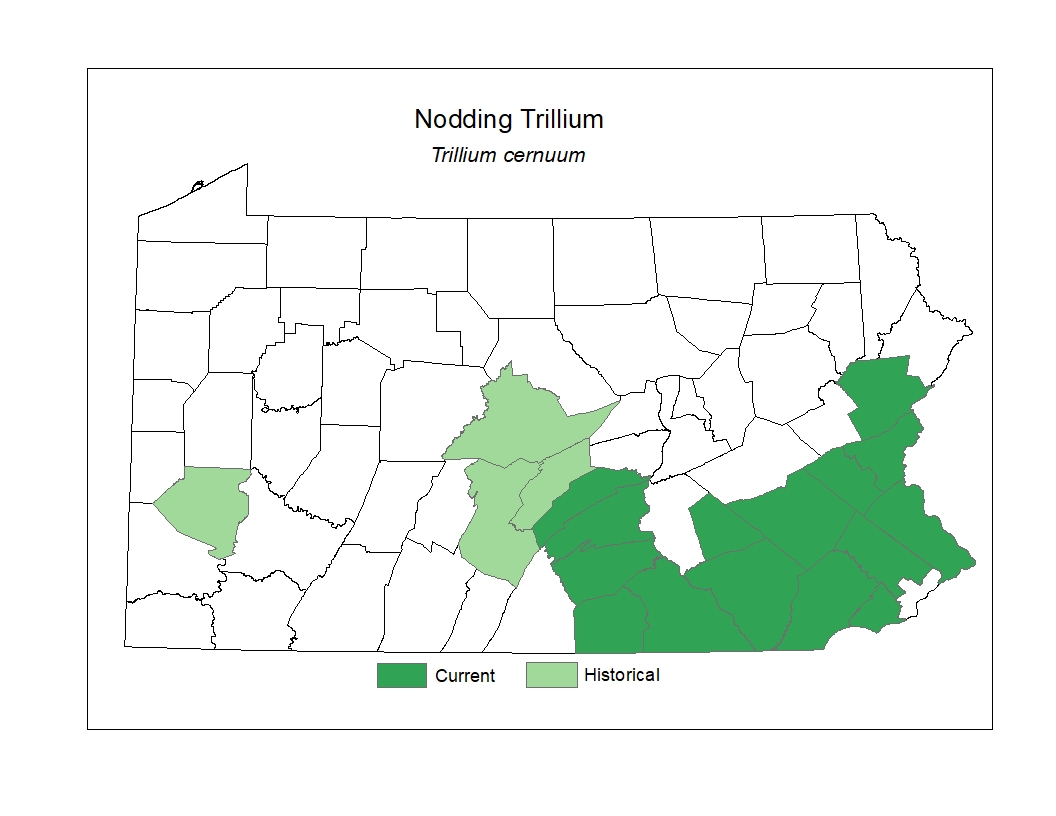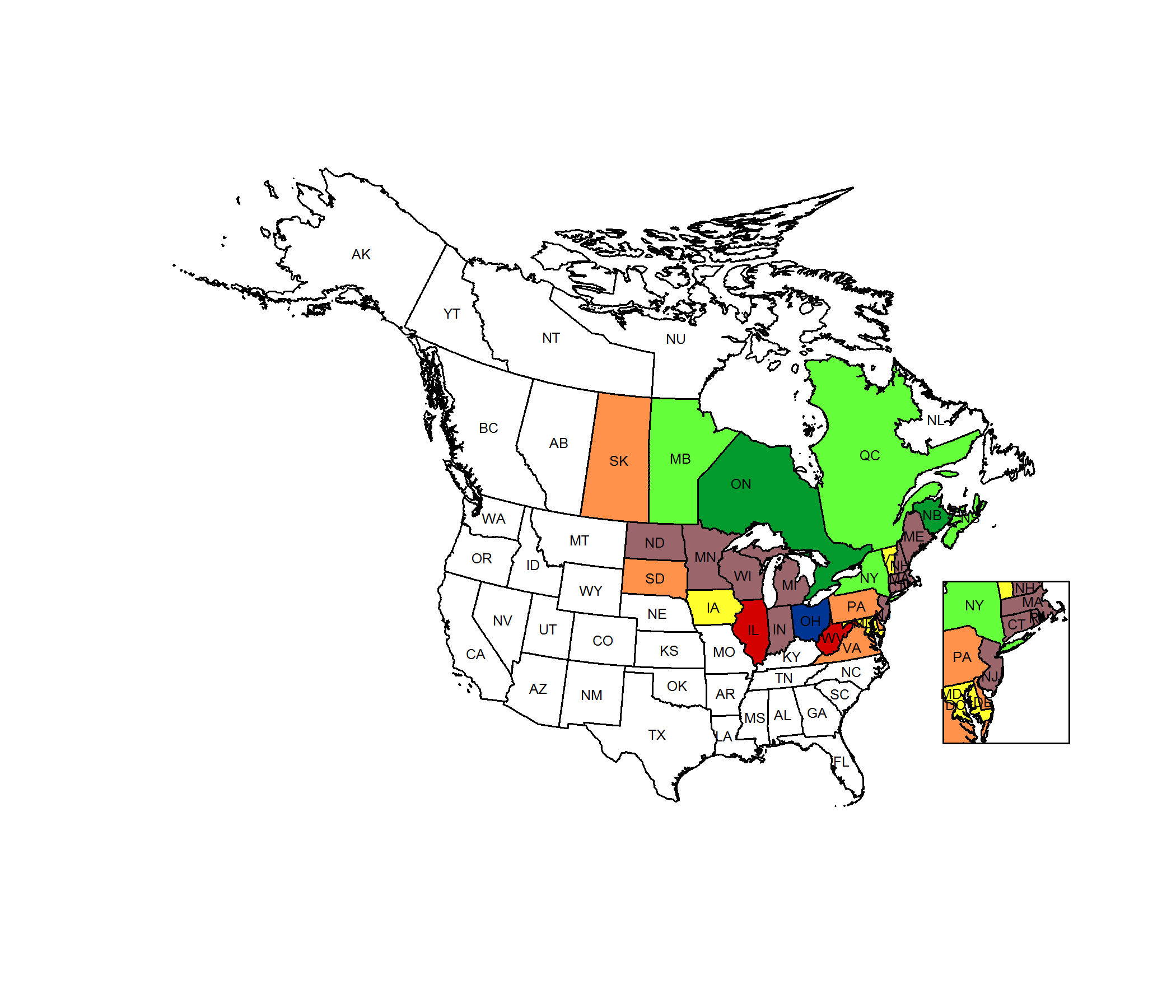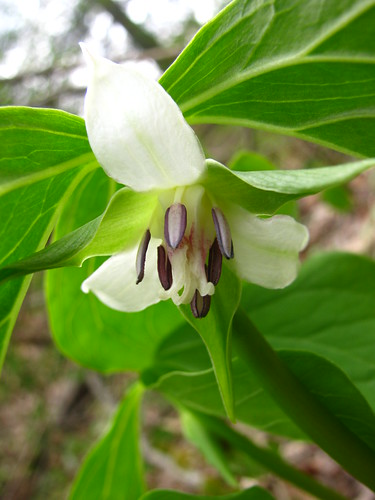 Species Factsheets
Species Factsheets
Trillium cernuum
Nodding Trillium
State Status: N
PBS Status: Pennsylvania Threatened (PT)
Federal Status:
Global Rank: G5
![]() rank interpretation
rank interpretation
State Rank: S2
Did You Know?
Trillium species' leaves make a good edition to salad or soup as an herb. The roots can be used for medicine as an antiseptic, diuretic and ophthalmic.
Description
Nodding trillium (Trillium cernuum) is a perennial herb that grows up to 40cm tall. The leaves occur in a whorl of three, with the leaf blades being stalkless or nearly so, oval to diamond-shaped, 5-15cm long, and hairless. The single flower has a drooping stalk and hangs below the leaves. Each 2.5-4cm flower has three white to pinkish petals backed by three alternating green sepals. The petals curve strongly upward toward the bottom of the leaves. The blooming time is in April and May.
Rank Justification
Imperiled in the nation or state because of rarity due to very restricted range, very few populations (often 20 or fewer), steep declines, or other factors making it very vulnerable to extirpation from the nation or state.
PABS
The PA Biological Survey considers nodding trillium to be a species of special concern, based on the relatively few occurrences that have been recently documented. It does not have a PA legal rarity status, but has been assigned a PABS suggested rarity status of Undetermined. Fewer than 10 populations are known.
Habitat
In Pennsylvania, it occurs mostly in the southeastern counties, where it grows in rich, moist woods.
Survey Dates
Flowers April - May
Distribution

Threats
Habitat loss, land conversion for development, and displacement by invasive species have all played a part in the decline of nodding trillium populations. Many of the remaining rich, moist forests in southeastern and south-central Pennsylvania have become increasingly fragmented, which further degrades habitat quality. Overabundant deer populations have also contributed to reduced nodding trillium numbers.
Management
Maintenance of known populations and preservation of the communities where nodding trillium grows will be crucial to its survival. Creating buffers around fragmented habitat and removal of invasive species will help to maintain populations and encourage new population growth. The management of the known sites requires long term monitoring of populations.
Conservation Status Map

NatureServe. 2017. NatureServe Explorer: An online encyclopedia of life [web application]. Version 7.1. NatureServe, Arlington, Virginia. Available https://explorer.natureserve.org.
https://altnature.com/gallery/trilliums.htm
- NatureServe. 2018. NatureServe Explorer: An online encyclopedia of life [web application]. Version 7.1. NatureServe, Arlington, Virginia. Available at https://www.natureserve.org/explorer
- Pennsylvania Natural Heritage Program. 2018.
- Rhoads, A.F. and W.M. Klein, Jr. 1993. The Vascular Flora of Pennsylvania. American Philosophical Society, Philadelphia, Pennsylvania. Rhoads, A.F. and T.A. Block.
- 2007. The Plants of Pennsylvania: An Illustrated Manual. 2nd edition. University of Pennsylvania Press, Philadelphia, Pennsylvania.







